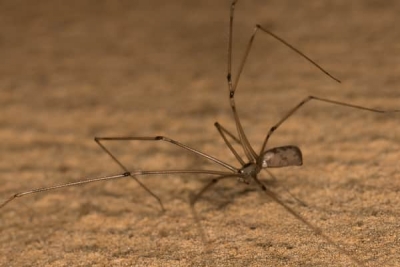
These arachnids make their living by eating decomposing vegetative and animal matter although are opportunist predators if they can get away with it. They do not have venom glands, fangs or any other mechanism for chemically subduing their food. Therefore, they do not have injectable toxins. Some have defensive secretions that might be toxic to small animals if ingested. So, for these daddy-long-legs, the tale is clearly false.
Here, the myth is incorrect at least in making claims that have no basis in known facts. There is no reference to any pholcid spider biting a human and causing any detrimental reaction. If these spiders were indeed deadly but couldn’t bite humans, then the only way we would know that they are toxic is by milking them and injecting the venom into humans. For a variety of reasons including Amnesty International and a humanitarian code of ethics, this research has never been done. Furthermore, there are no toxicological studies testing the lethality of pholcid venom on any mammalian system (this is usually done with mice). Therefore, no information is available on the likely toxic effects of their venom in humans, so the part of the myth about their being especially dangerous is just that: a myth. There is no scientific basis for the supposition that they are deadly and there is no reason to assume that it is true.
What about their fangs being too short to penetrate human skin? Pholcids do indeed have short fangs, which in arachnological terms is called “uncate” because they have a secondary tooth which meets the fang like the way the two grabbing parts of a pair of tongs come together. Brown recluse spiders similarly have uncate fang structure and they obviously are able to bite humans. There may be a difference in the musculature that houses the fang such that recluses have stronger muscles for penetration because they are hunting spiders needing to subdue wandering prey whereas pholcid spiders are able to wrap their prey and don’t need as strong a musculature. So, again, the myth states as fact something about which there is no scientific basis.
Credit : Riverside
Picture Credit : Google




